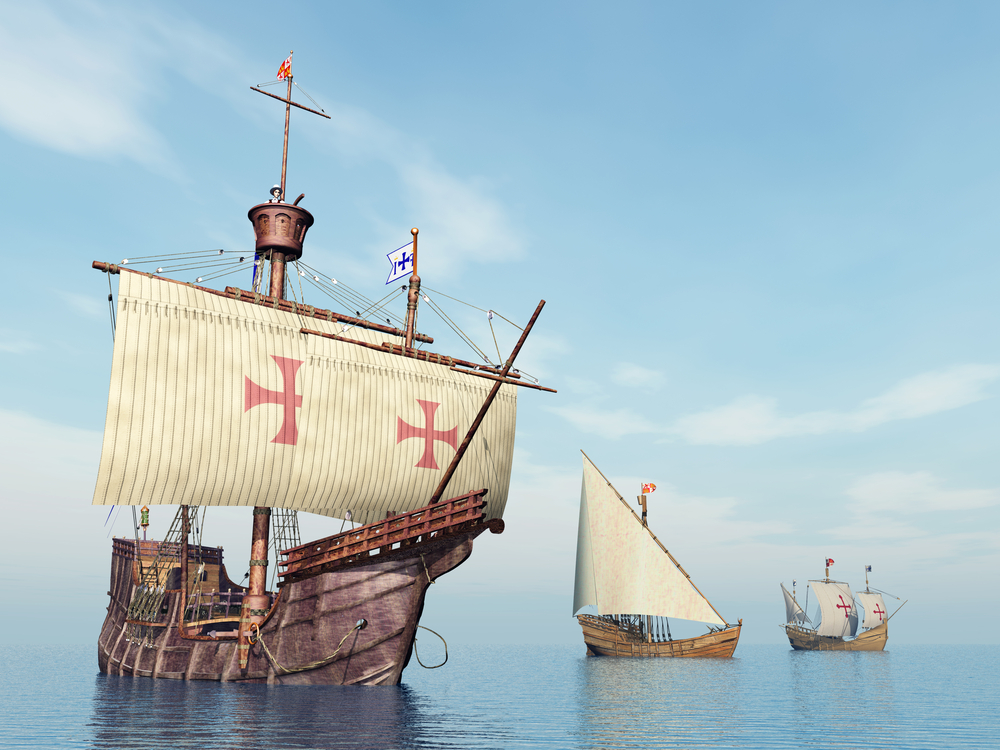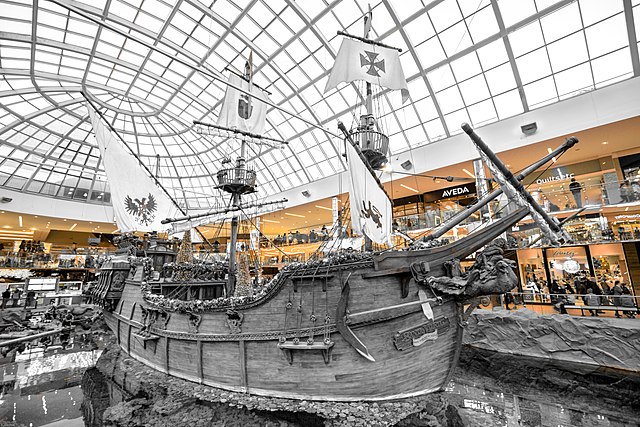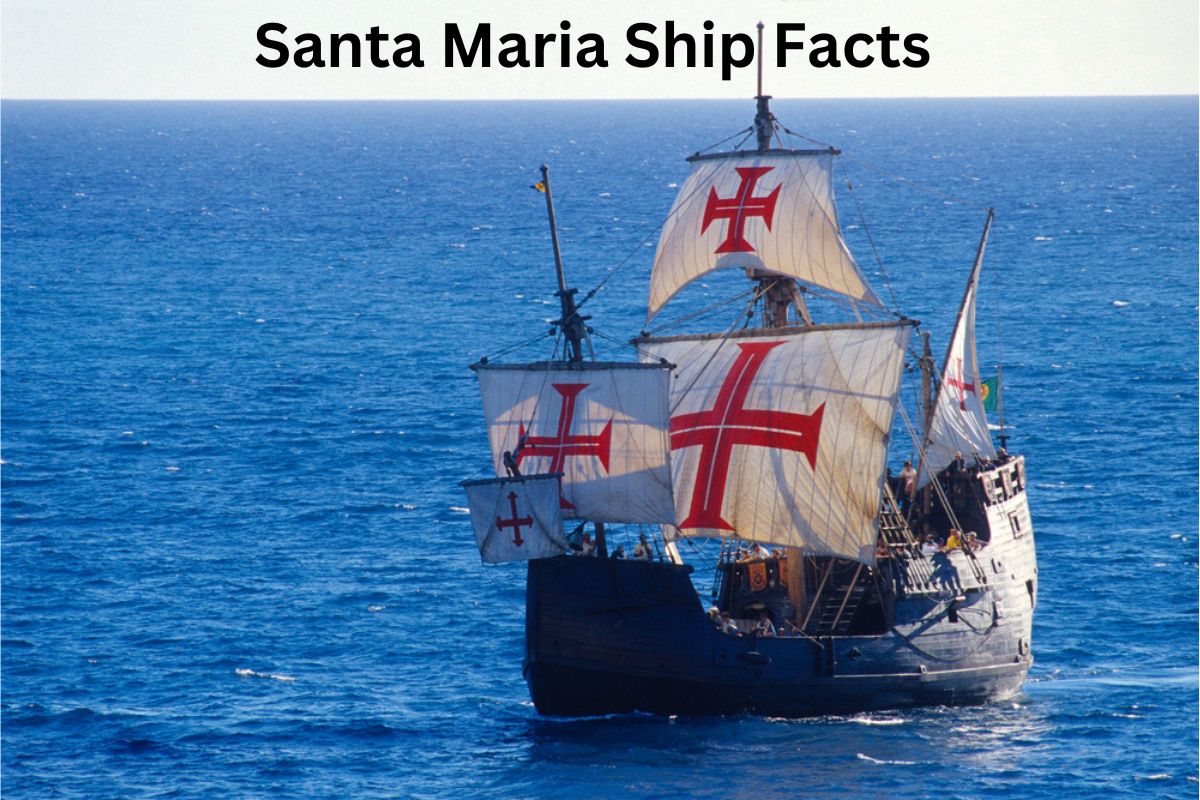The Santa Maria, one of the three ships used by Christopher Columbus on his historic first voyage to the Americas in 1492, holds a significant place in maritime history. As the largest of the expedition’s vessels, this carrack played a crucial role in the exploration and subsequent encounters with the New World.
Constructed in Spain and owned by Juan de la Cosa, the Santa Maria set sail with the ambitious goal of discovering a western route to Asia. However, the ship met an unfortunate fate, running aground and ultimately being lost off the coast of present-day Haiti.
Despite its tragic end, the Santa Maria remains an iconic symbol of exploration, and replicas around the world serve as reminders of its historical significance.
Facts About the Santa Maria Ship
1. The Santa Maria was one of the three ships used by Christopher Columbus on his first voyage to the Americas in 1492
The Santa Maria was one of the three ships used by Christopher Columbus on his first voyage to the Americas in 1492. This historic expedition was funded by the Spanish monarchy, Queen Isabella I of Castile and King Ferdinand II of Aragon, who sought to find a western route to Asia.
Columbus believed that by sailing west, he could reach the eastern shores of Asia, but instead, he encountered the islands of the Caribbean.
2. The Santa Maria was the largest of the three ships
The Santa Maria was the largest of the three ships used by Columbus on his voyage. It was a relatively large vessel for its time, measuring approximately 70 feet (21 meters) in length.
The ship had a single deck and three masts, which carried square sails. Its size allowed for greater cargo capacity, making it suitable for long-distance exploration.

3. The ship was originally named La Gallega, meaning “The Galician,” after the province in Spain where it was built
Originally named La Gallega, meaning “The Galician” in Spanish, the Santa Maria was constructed in the Spanish port of Pontevedra, in the province of Galicia. The ship was built using traditional shipbuilding techniques of the time, with a wooden hull and a sturdy framework.
Its construction followed the design principles of carracks, which were popular ships during the Age of Discovery. Carracks were known for their excellent seaworthiness, spacious cargo holds, and capability to carry a significant amount of provisions for long voyages.
4. The Santa Maria was a carrack, a type of sailing ship widely used by Europeans in the 15th and 16th centuries
The Santa Maria was a carrack, a type of sailing ship widely used by Europeans in the 15th and 16th centuries. Carracks were highly versatile vessels that played a significant role in maritime exploration and trade during the Age of Discovery.
They were known for their distinctive high forecastle and aftcastle, which provided additional space for crew and equipment.
Carracks were characterized by their robust construction, with a sturdy hull, multiple decks, and a combination of square and lateen sails that allowed for efficient maneuverability.
5. The ship was owned by Juan de la Cosa, a Spanish navigator and explorer
The ship was owned by Juan de la Cosa, a Spanish navigator and explorer who accompanied Christopher Columbus on his first voyage. De la Cosa was an experienced mariner and cartographer, and his ownership of the Santa Maria indicates his investment and involvement in the expedition.
As the owner, de la Cosa had a vested interest in the success of the voyage, both for financial gain and the potential discovery of new lands.

6. The Santa Maria ran aground and was lost on December 25, 1492, off the coast of present-day Haiti
On the night of December 24-25, 1492, while Columbus was asleep, the Santa Maria ran aground and was lost off the coast of present-day Haiti. The ship struck a reef called the Caracol Shoal, causing severe damage to its hull. Despite efforts to re-float the vessel, it proved unsuccessful.
Columbus ordered the salvaged materials to be used to build a fort named La Navidad, which served as the first European settlement in the New World.
The wrecking of the Santa Maria was a significant setback for the expedition, but Columbus managed to salvage the situation by leaving a group of men behind at La Navidad and returning to Spain on the remaining two ships, the Niña and the Pinta.
7. After the shipwreck, Columbus left a group of men behind at La Navidad and returned to Spain
After the shipwreck, Columbus left a group of men behind at La Navidad and returned to Spain on the remaining two ships, the Niña and the Pinta. The men left at La Navidad were tasked with establishing a settlement and collecting valuable information about the land, its resources, and the indigenous people.
However, when Columbus returned to the site on his second voyage in 1493, he found the settlement destroyed and all the men killed. The fate of the Santa Maria’s crew left behind at La Navidad remains a tragic mystery.
8. The fate of the Santa Maria after the wreck is uncertain
The fate of the Santa Maria after the wreck is uncertain. According to some accounts, the ship was stripped of its usable materials by the native Taíno people and ultimately burned.
Others propose that it may have been salvaged and used by the Spanish colonists or abandoned and left to deteriorate. Despite efforts by historians and archaeologists to locate the exact remains of the ship, its final resting place has yet to be definitively identified.
9. In the 20th century, numerous expeditions were launched to search for the remains of the Santa Maria
In the 20th century, numerous expeditions were launched to search for the remains of the Santa Maria. One notable expedition took place in 2003, led by underwater explorer Barry Clifford off the coast of Haiti.
Clifford claimed to have discovered the wreck of the Santa Maria, supported by historical research and findings of underwater artifacts.
However, the discovery remains disputed by some experts who question the evidence and suggest that the wreck may belong to a different ship from the same time period.
10. Today, replicas of the Santa Maria can be found in various locations around the world
Today, replicas of the Santa Maria can be found in various locations around the world, serving as educational and historical landmarks.
For example, the Columbus Lighthouse in Santo Domingo, Dominican Republic, houses a full-scale replica of the ship. The Columbus Lighthouse is a monument dedicated to Christopher Columbus and his explorations.
Additionally, the city of Columbus, Ohio, in the United States, is home to a replica of the Santa Maria, which is docked along the Scioto River and serves as a museum and tourist attraction. These replicas provide visitors with the opportunity to experience and learn about the ship that played a significant role in the exploration of the New World.
